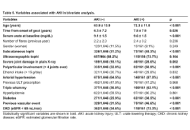
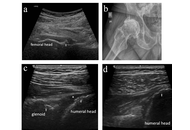
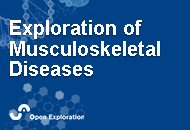
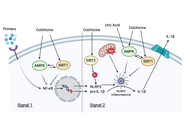
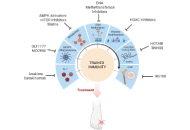
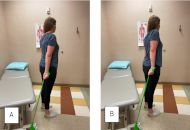
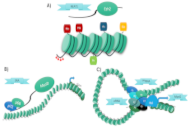
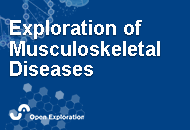
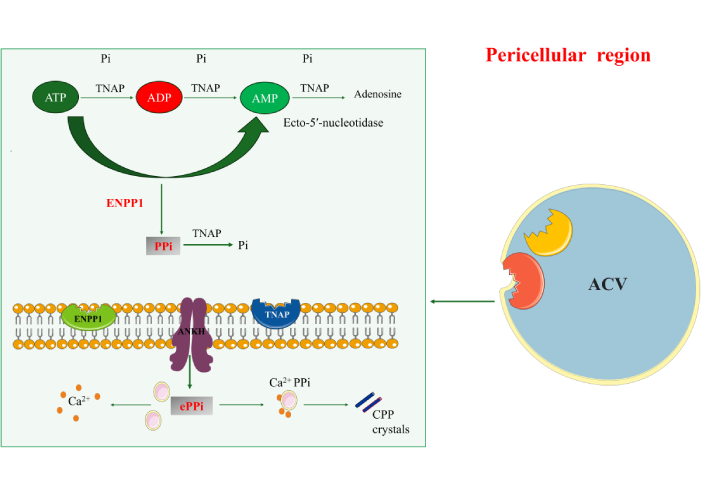
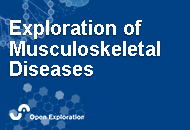
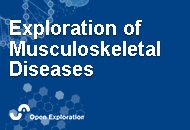
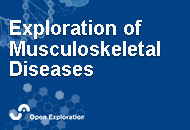
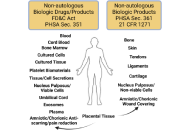
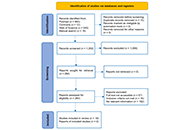
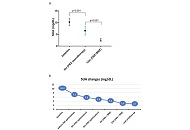
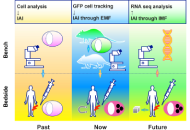
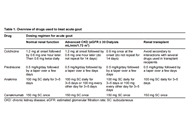
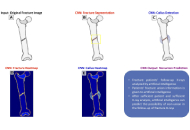
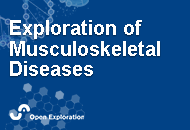


Aim:
To compare the rate of acute kidney injury (AKI) associated with non-steroidal anti-inflammatory drugs (NSAIDs) through two consecutive decades in patients with gout and to study factors associated with AKI events.
Methods:
Retrospective analysis of data from Jan 1994 to Dec 2024. Data on AKI and upper gastrointestinal bleeding (UGB) were collected during the same period (2005–2024), along with general (age, gender, time from onset), gout-related (tophi, imaging, clinical distribution, number of flares), treatment-related (diuretic and urate-lowering medications, exposure to the triple whammy), and comorbidities-related variables (hypertension, hyperlipidemia, diabetes, chronic kidney disease). Analysis was made for the whole cohort and comparing decades with each other. Survival analysis was performed to evaluate those variables independently associated with a higher risk of AKI.
Results:
1,207 cases were available for analysis. The overall cumulated rate of AKI was 13.3%, showing an increase from 9.9% to 16.1% from the first to the second decades, respectively, but no change in the severity of AKI was observed. In contrast, there was no change in the rate of UGB through the two decades (close to 2%). There was an increase in the frequency of gout severity variables, triple whammy exposure, and comorbid conditions through the two decades. Age, tophaceous gout, chronic kidney disease, triple whammy exposure, were variables independently associated with a higher risk of AKI, while urate-lowering prescription was associated with a lower risk.
Conclusions:
An increase in the rate of AKI was observed through the two decades studied, associated with an increase in gout severity, comorbidity, and exposure to triple whammy. Chronic kidney disease and exposure to triple whammy in older patients with severe (tophaceous) gout seem to define the combination for the highest risk, in whom the avoidance of NSAIDs should be carefully considered.
Aim:
To compare the rate of acute kidney injury (AKI) associated with non-steroidal anti-inflammatory drugs (NSAIDs) through two consecutive decades in patients with gout and to study factors associated with AKI events.
Methods:
Retrospective analysis of data from Jan 1994 to Dec 2024. Data on AKI and upper gastrointestinal bleeding (UGB) were collected during the same period (2005–2024), along with general (age, gender, time from onset), gout-related (tophi, imaging, clinical distribution, number of flares), treatment-related (diuretic and urate-lowering medications, exposure to the triple whammy), and comorbidities-related variables (hypertension, hyperlipidemia, diabetes, chronic kidney disease). Analysis was made for the whole cohort and comparing decades with each other. Survival analysis was performed to evaluate those variables independently associated with a higher risk of AKI.
Results:
1,207 cases were available for analysis. The overall cumulated rate of AKI was 13.3%, showing an increase from 9.9% to 16.1% from the first to the second decades, respectively, but no change in the severity of AKI was observed. In contrast, there was no change in the rate of UGB through the two decades (close to 2%). There was an increase in the frequency of gout severity variables, triple whammy exposure, and comorbid conditions through the two decades. Age, tophaceous gout, chronic kidney disease, triple whammy exposure, were variables independently associated with a higher risk of AKI, while urate-lowering prescription was associated with a lower risk.
Conclusions:
An increase in the rate of AKI was observed through the two decades studied, associated with an increase in gout severity, comorbidity, and exposure to triple whammy. Chronic kidney disease and exposure to triple whammy in older patients with severe (tophaceous) gout seem to define the combination for the highest risk, in whom the avoidance of NSAIDs should be carefully considered.
DOI: https://doi.org/10.37349/emd.2025.1007107
This article belongs to the special issue Evaluation and Outcomes in the Management of Gout

Immune checkpoint inhibitors (ICIs) have transformed cancer care, but their use is frequently complicated by immune-related adverse events (irAEs), including rheumatic manifestations such as arthritis. Distinguishing between inflammatory and non-inflammatory musculoskeletal symptoms is challenging, yet critical for appropriate management. Musculoskeletal ultrasound (MSKUS) provides unique advantages in this context by enabling the detection of subclinical synovitis, periarticular pathology, and crystal deposition, while also facilitating treatment decisions, including targeted corticosteroid injections. We present four cases that highlight the utility of MSKUS as a frontline tool in the evaluation of musculoskeletal irAEs.
Immune checkpoint inhibitors (ICIs) have transformed cancer care, but their use is frequently complicated by immune-related adverse events (irAEs), including rheumatic manifestations such as arthritis. Distinguishing between inflammatory and non-inflammatory musculoskeletal symptoms is challenging, yet critical for appropriate management. Musculoskeletal ultrasound (MSKUS) provides unique advantages in this context by enabling the detection of subclinical synovitis, periarticular pathology, and crystal deposition, while also facilitating treatment decisions, including targeted corticosteroid injections. We present four cases that highlight the utility of MSKUS as a frontline tool in the evaluation of musculoskeletal irAEs.
DOI: https://doi.org/10.37349/emd.2025.1007106
This article belongs to the special issue Multifaceted Imaging in Rheumatic and Musculoskeletal Diseases

Aim:
Vitamin D deficiency is increasingly recognised as a global health concern and is associated with musculoskeletal pain. Women adhering to cultural clothing practices may be at increased risk due to limited sun exposure. This study aimed to determine the prevalence of vitamin D deficiency and identify its predictors among Northern Muslim women with chronic musculoskeletal pain living in Port Harcourt, Nigeria.
Methods:
A cross-sectional study of 220 Northern Muslim women aged ≥ 18 years with chronic musculoskeletal pain was conducted in Port Harcourt, Nigeria. Sociodemographic and lifestyle data were collected, and serum 25-hydroxyvitamin D levels were measured using ELISA. Participants with conditions affecting vitamin D absorption or metabolism, or those taking interfering medications, were excluded. Group comparisons (deficient vs. non-deficient) were performed using chi-square tests for categorical variables, independent-samples t-tests for continuous variables, and one-way ANOVA for pain scores across vitamin D status categories. Multivariate logistic regression was used to identify predictors of vitamin D deficiency. Analyses were conducted using IBM SPSS Statistics version 25 (IBM Corp., Armonk, NY, USA), with p < 0.05 considered significant.
Results:
The prevalence of vitamin D deficiency was 65.0%, a rate slightly higher yet comparable to reports from other urban populations. Significant predictors included full-body covering (adjusted OR = 3.1; 95.00% CI: 1.8–5.3), low intake of vitamin D-rich foods (OR = 2.4; 95.00% CI: 1.3–4.1), and outdoor activity < 3 hours per week (OR = 2.7; 95.00% CI: 1.6–4.6). Vitamin D-deficient participants reported higher mean pain scores (7.3 ± 1.4) than vitamin D-insufficient participants (5.9 ± 1.3).
Conclusions:
Vitamin D deficiency is highly prevalent among Northern Muslim women with chronic musculoskeletal pain in Port Harcourt, largely influenced by clothing practices, low sun exposure, and inadequate dietary intake. Public health strategies, including targeted education and supplementation programs, are recommended to address this burden.
Aim:
Vitamin D deficiency is increasingly recognised as a global health concern and is associated with musculoskeletal pain. Women adhering to cultural clothing practices may be at increased risk due to limited sun exposure. This study aimed to determine the prevalence of vitamin D deficiency and identify its predictors among Northern Muslim women with chronic musculoskeletal pain living in Port Harcourt, Nigeria.
Methods:
A cross-sectional study of 220 Northern Muslim women aged ≥ 18 years with chronic musculoskeletal pain was conducted in Port Harcourt, Nigeria. Sociodemographic and lifestyle data were collected, and serum 25-hydroxyvitamin D levels were measured using ELISA. Participants with conditions affecting vitamin D absorption or metabolism, or those taking interfering medications, were excluded. Group comparisons (deficient vs. non-deficient) were performed using chi-square tests for categorical variables, independent-samples t-tests for continuous variables, and one-way ANOVA for pain scores across vitamin D status categories. Multivariate logistic regression was used to identify predictors of vitamin D deficiency. Analyses were conducted using IBM SPSS Statistics version 25 (IBM Corp., Armonk, NY, USA), with p < 0.05 considered significant.
Results:
The prevalence of vitamin D deficiency was 65.0%, a rate slightly higher yet comparable to reports from other urban populations. Significant predictors included full-body covering (adjusted OR = 3.1; 95.00% CI: 1.8–5.3), low intake of vitamin D-rich foods (OR = 2.4; 95.00% CI: 1.3–4.1), and outdoor activity < 3 hours per week (OR = 2.7; 95.00% CI: 1.6–4.6). Vitamin D-deficient participants reported higher mean pain scores (7.3 ± 1.4) than vitamin D-insufficient participants (5.9 ± 1.3).
Conclusions:
Vitamin D deficiency is highly prevalent among Northern Muslim women with chronic musculoskeletal pain in Port Harcourt, largely influenced by clothing practices, low sun exposure, and inadequate dietary intake. Public health strategies, including targeted education and supplementation programs, are recommended to address this burden.
DOI: https://doi.org/10.37349/emd.2025.1007105

In the past decade, the metabolic syndrome has been recast as a chronic inflammatory disease whose mechanisms involve macrophage and neutrophil activation, initiation of the nod-like receptor protein 3 (NLRP3) inflammasome, and IL-1β secretion. Colchicine, an inhibitor of NLRP3, has been linked to the prevention or amelioration of diseases associated with the metabolic syndrome, including diabetes and cardiovascular disease. Its underlying therapeutic mechanisms extend beyond direct suppression of NLRP3, and include sirtuin and AMP-activated protein kinase (AMPK) pathway regulation, and downregulation of cellular stress signals, which promote atherosclerotic plaque rupture, insulin resistance, and obesity. Colchicine’s proven efficacy in preventing cardiovascular disease is a promising new development recognized by its inclusion in the 2023 American College of Cardiology treatment guidelines. As colchicine’s effects are better understood, along with a clearer understanding of metabolic syndrome’s pathophysiology, promising new applications and uses for this old drug may be on the horizon and are worthy of further investigation. In this review, we discuss colchicine’s pharmacology and explore its established and emerging anti-inflammatory mechanisms, and the role these could play in disrupting the chronic inflammation in metabolic syndrome and associated diseases.
In the past decade, the metabolic syndrome has been recast as a chronic inflammatory disease whose mechanisms involve macrophage and neutrophil activation, initiation of the nod-like receptor protein 3 (NLRP3) inflammasome, and IL-1β secretion. Colchicine, an inhibitor of NLRP3, has been linked to the prevention or amelioration of diseases associated with the metabolic syndrome, including diabetes and cardiovascular disease. Its underlying therapeutic mechanisms extend beyond direct suppression of NLRP3, and include sirtuin and AMP-activated protein kinase (AMPK) pathway regulation, and downregulation of cellular stress signals, which promote atherosclerotic plaque rupture, insulin resistance, and obesity. Colchicine’s proven efficacy in preventing cardiovascular disease is a promising new development recognized by its inclusion in the 2023 American College of Cardiology treatment guidelines. As colchicine’s effects are better understood, along with a clearer understanding of metabolic syndrome’s pathophysiology, promising new applications and uses for this old drug may be on the horizon and are worthy of further investigation. In this review, we discuss colchicine’s pharmacology and explore its established and emerging anti-inflammatory mechanisms, and the role these could play in disrupting the chronic inflammation in metabolic syndrome and associated diseases.
DOI: https://doi.org/10.37349/emd.2025.1007104
This article belongs to the special issue Pharmacological and Non-Pharmacological Management of Gout

Gout is a chronic inflammatory arthritis driven by monosodium urate crystal deposition and the NACHT, LRR, and PYD domains-containing protein 3 (NLRP3) inflammasome activation, leading to interleukin-1β (IL-1β)-mediated inflammation. Recent studies reveal that hyperuricemia induces a state of immunological memory in innate immune cells through persistent epigenetic and metabolic reprogramming of monocytes and macrophages. These alterations enhance the responsiveness of innate immune cells, leading to exaggerated inflammatory reactions upon subsequent stimulation. This review synthesizes recent studies that elucidate how metabolic shifts (e.g., increased glycolysis and fumarate accumulation) and epigenetic changes (e.g., altered histone methylation and DNA methylation) reinforce this pathogenic memory. Importantly, these mechanistic insights provide the rationale for emerging therapeutic strategies: IL-1β inhibitors aim to interrupt the central inflammatory axis; metabolic modulators (e.g., metformin, statins) seek to reverse the trained metabolic state; and epigenetic therapies [e.g., histone deacetylase (HDAC) or DNA methyltransferase (DNMT) inhibitors] hold potential to reset dysregulated immune programming. Collectively, this review argues that multi-layered intervention, such as cytokine blockade for acute control, coupled with metabolic or epigenetic remodeling for long-term reprogramming, could yield sustained disease suppression and reduced flare frequency in gout.
Gout is a chronic inflammatory arthritis driven by monosodium urate crystal deposition and the NACHT, LRR, and PYD domains-containing protein 3 (NLRP3) inflammasome activation, leading to interleukin-1β (IL-1β)-mediated inflammation. Recent studies reveal that hyperuricemia induces a state of immunological memory in innate immune cells through persistent epigenetic and metabolic reprogramming of monocytes and macrophages. These alterations enhance the responsiveness of innate immune cells, leading to exaggerated inflammatory reactions upon subsequent stimulation. This review synthesizes recent studies that elucidate how metabolic shifts (e.g., increased glycolysis and fumarate accumulation) and epigenetic changes (e.g., altered histone methylation and DNA methylation) reinforce this pathogenic memory. Importantly, these mechanistic insights provide the rationale for emerging therapeutic strategies: IL-1β inhibitors aim to interrupt the central inflammatory axis; metabolic modulators (e.g., metformin, statins) seek to reverse the trained metabolic state; and epigenetic therapies [e.g., histone deacetylase (HDAC) or DNA methyltransferase (DNMT) inhibitors] hold potential to reset dysregulated immune programming. Collectively, this review argues that multi-layered intervention, such as cytokine blockade for acute control, coupled with metabolic or epigenetic remodeling for long-term reprogramming, could yield sustained disease suppression and reduced flare frequency in gout.
DOI: https://doi.org/10.37349/emd.2025.1007103
This article belongs to the special issue Pharmacological and Non-Pharmacological Management of Gout

Arterial thoracic outlet syndrome (aTOS) is a rare condition, but it has an elevated incidence among athletes due to high mechanical demands placed on the upper extremities. Post-surgical rehabilitation guidelines for aTOS are not well defined, especially in high-performance populations. Mechanically loaded neurodynamics (MLND) is a novel technique that introduces controlled external load during neurodynamic movements to optimize neurovascular adaptation and musculoskeletal function. A 47-year-old professional long-distance cyclist presented with left upper extremity pain, paresthesia, and vascular symptoms three weeks after undergoing left first rib and cervical rib resection with scalenectomy for aTOS. The patient had significant scapular dyskinesis, thoracic spine hypomobility, glenohumeral joint stiffness, and posture-related thoracic outlet compression, alongside hyperalgesia and allodynia in the ulnar nerve distribution. A structured 11-week physical therapy protocol was implemented, including traditional and MLND techniques, progressive scapular and thoracic mobility training, and sport-specific strengthening. MLND was introduced to progressively load neural tissues in median, ulnar, and radial nerve distributions while addressing musculoskeletal impairments that contribute to thoracic outlet compression. The patient demonstrated a significant reduction in pain and neurological symptoms, resolution of allodynia, restoration of full active range of motion, ≥ 93% limb symmetry index in strength testing, and an improvement in DASH score from 86.7 to 2.5. The athlete returned to unrestricted cycling at her previous level within 3.5 months post-operation. No adverse effects were reported with MLND use. This case highlights the potential role of MLND in accelerating recovery following thoracic outlet surgery in athletic populations. The approach emphasizes progressive mechanical loading to stimulate neurovascular adaptation and addresses the underlying musculoskeletal impairments contributing to neurovascular compression. Given the absence of standardized protocols for aTOS rehabilitation, MLND may serve as a safe and effective intervention. Future research should further investigate its mechanophysiological effects and clinical efficacy through controlled trials.
Arterial thoracic outlet syndrome (aTOS) is a rare condition, but it has an elevated incidence among athletes due to high mechanical demands placed on the upper extremities. Post-surgical rehabilitation guidelines for aTOS are not well defined, especially in high-performance populations. Mechanically loaded neurodynamics (MLND) is a novel technique that introduces controlled external load during neurodynamic movements to optimize neurovascular adaptation and musculoskeletal function. A 47-year-old professional long-distance cyclist presented with left upper extremity pain, paresthesia, and vascular symptoms three weeks after undergoing left first rib and cervical rib resection with scalenectomy for aTOS. The patient had significant scapular dyskinesis, thoracic spine hypomobility, glenohumeral joint stiffness, and posture-related thoracic outlet compression, alongside hyperalgesia and allodynia in the ulnar nerve distribution. A structured 11-week physical therapy protocol was implemented, including traditional and MLND techniques, progressive scapular and thoracic mobility training, and sport-specific strengthening. MLND was introduced to progressively load neural tissues in median, ulnar, and radial nerve distributions while addressing musculoskeletal impairments that contribute to thoracic outlet compression. The patient demonstrated a significant reduction in pain and neurological symptoms, resolution of allodynia, restoration of full active range of motion, ≥ 93% limb symmetry index in strength testing, and an improvement in DASH score from 86.7 to 2.5. The athlete returned to unrestricted cycling at her previous level within 3.5 months post-operation. No adverse effects were reported with MLND use. This case highlights the potential role of MLND in accelerating recovery following thoracic outlet surgery in athletic populations. The approach emphasizes progressive mechanical loading to stimulate neurovascular adaptation and addresses the underlying musculoskeletal impairments contributing to neurovascular compression. Given the absence of standardized protocols for aTOS rehabilitation, MLND may serve as a safe and effective intervention. Future research should further investigate its mechanophysiological effects and clinical efficacy through controlled trials.
DOI: https://doi.org/10.37349/emd.2025.1007102

The dynamic organization of chromatin plays a critical role in regulating muscle cell differentiation. Among the molecular elements influencing chromatin architecture, long noncoding RNAs (lncRNAs) have emerged as important regulators due to their capacity to act as scaffolds, recruiters of chromatin-modifying proteins, or as transcriptional enhancers. This review aims to explore the mechanisms by which lncRNAs influence chromatin structure in the context of skeletal muscle differentiation. We classified the functional roles of lncRNAs into three main strategies: recruitment of epigenetic modifiers, assembly of transcriptional scaffolds, and regulation through enhancer-like activity. We provide specific examples of lncRNAs associated with these mechanisms and discuss their involvement in the control of myogenic gene expression. These findings highlight the complexity and specificity of lncRNA-mediated chromatin remodeling and suggest their potential as targets for therapeutic intervention in muscle-related disorders.
The dynamic organization of chromatin plays a critical role in regulating muscle cell differentiation. Among the molecular elements influencing chromatin architecture, long noncoding RNAs (lncRNAs) have emerged as important regulators due to their capacity to act as scaffolds, recruiters of chromatin-modifying proteins, or as transcriptional enhancers. This review aims to explore the mechanisms by which lncRNAs influence chromatin structure in the context of skeletal muscle differentiation. We classified the functional roles of lncRNAs into three main strategies: recruitment of epigenetic modifiers, assembly of transcriptional scaffolds, and regulation through enhancer-like activity. We provide specific examples of lncRNAs associated with these mechanisms and discuss their involvement in the control of myogenic gene expression. These findings highlight the complexity and specificity of lncRNA-mediated chromatin remodeling and suggest their potential as targets for therapeutic intervention in muscle-related disorders.
DOI: https://doi.org/10.37349/emd.2025.1007101

Calcium pyrophosphate crystal deposition disease is a prevalent and impactful form of crystal arthropathy. It usually targets the large joints of the extremities, significantly affecting daily life. Progression of this disease, commonly observed in older individuals and often mistaken for septic arthritis, osteoarthritis, or several rheumatic conditions, remains poorly understood. The disease can present in various forms, from asymptomatic to severe joint deformity. The primary goal of treating this disease is to firmly control inflammation, prevent joint deformities, and decisively stop attacks. Medications used to treat the disease include anti-rheumatic drugs such as non-steroidal anti-inflammatory drugs, oral, intramuscular, or intra-articular steroids, hydroxychloroquine, colchicine, methotrexate, and interleukin-1 receptor antagonists. Radiosynovectomy is a radioactive technique that effectively targets and eliminates inflamed synovium. This article highlights the importance of awareness and early intervention to manage this condition effectively.
Calcium pyrophosphate crystal deposition disease is a prevalent and impactful form of crystal arthropathy. It usually targets the large joints of the extremities, significantly affecting daily life. Progression of this disease, commonly observed in older individuals and often mistaken for septic arthritis, osteoarthritis, or several rheumatic conditions, remains poorly understood. The disease can present in various forms, from asymptomatic to severe joint deformity. The primary goal of treating this disease is to firmly control inflammation, prevent joint deformities, and decisively stop attacks. Medications used to treat the disease include anti-rheumatic drugs such as non-steroidal anti-inflammatory drugs, oral, intramuscular, or intra-articular steroids, hydroxychloroquine, colchicine, methotrexate, and interleukin-1 receptor antagonists. Radiosynovectomy is a radioactive technique that effectively targets and eliminates inflamed synovium. This article highlights the importance of awareness and early intervention to manage this condition effectively.
DOI: https://doi.org/10.37349/emd.2025.1007100
This article belongs to the special issue Calcium Pyrophosphate Deposition Disease

Calcium pyrophosphate deposition (CPPD) disease represents a crystal-induced arthropathy characterized by the deposition of calcium pyrophosphate dihydrate crystals within the articular joints and adjacent soft tissues. The manifestation of CPPD can present in a variety of clinical forms, including acute pseudogout episodes, chronic inflammatory arthritis, a variant associated with osteoarthritis, and the “crowned dens” syndrome; alternatively, it may be identified incidentally during radiological assessments. The condition is predominantly observed in individuals aged over 60 years, with its incidence escalating in correlation with advancing age. The presence of CPP crystals activates the innate immune response, subsequently eliciting an inflammatory cascade. Among the mechanisms implicated in this inflammatory process are the activation of the nucleotide-binding domain, leucine-rich-containing family, pyrin domain-containing 3 (NLRP3) inflammasome, and the secretion of matrix metalloproteinases. The elevation of pro-inflammatory cytokines such as IL-6, IL-8, TNF-α, and pro-IL-1β exacerbates the inflammatory state within the affected joint. Although there is a marginally higher prevalence of CPPD in females, this gender disparity is not deemed statistically significant. CPPD may also manifest in younger and middle-aged populations, necessitating vigilance regarding potential metabolic disorders or hereditary conditions in such cases. The diagnosis of CPPD is predominantly established through a combination of clinical assessment and imaging modalities. The definitive diagnostic criterion involves the identification of CPP crystals in synovial fluid utilizing polarized light microscopy. Clinically, CPPD can be misdiagnosed as rheumatoid arthritis (RA), polymyalgia rheumatica (PMR), infectious arthritis, and other crystal-related arthropathies. The recently developed classification criteria by ACR/EULAR in 2023 are intended to enhance the precision of diagnosis. This review seeks to encapsulate the pathophysiology, clinical presentation, and diagnostic approaches related to CPPD disease, informed by contemporary literature.
Calcium pyrophosphate deposition (CPPD) disease represents a crystal-induced arthropathy characterized by the deposition of calcium pyrophosphate dihydrate crystals within the articular joints and adjacent soft tissues. The manifestation of CPPD can present in a variety of clinical forms, including acute pseudogout episodes, chronic inflammatory arthritis, a variant associated with osteoarthritis, and the “crowned dens” syndrome; alternatively, it may be identified incidentally during radiological assessments. The condition is predominantly observed in individuals aged over 60 years, with its incidence escalating in correlation with advancing age. The presence of CPP crystals activates the innate immune response, subsequently eliciting an inflammatory cascade. Among the mechanisms implicated in this inflammatory process are the activation of the nucleotide-binding domain, leucine-rich-containing family, pyrin domain-containing 3 (NLRP3) inflammasome, and the secretion of matrix metalloproteinases. The elevation of pro-inflammatory cytokines such as IL-6, IL-8, TNF-α, and pro-IL-1β exacerbates the inflammatory state within the affected joint. Although there is a marginally higher prevalence of CPPD in females, this gender disparity is not deemed statistically significant. CPPD may also manifest in younger and middle-aged populations, necessitating vigilance regarding potential metabolic disorders or hereditary conditions in such cases. The diagnosis of CPPD is predominantly established through a combination of clinical assessment and imaging modalities. The definitive diagnostic criterion involves the identification of CPP crystals in synovial fluid utilizing polarized light microscopy. Clinically, CPPD can be misdiagnosed as rheumatoid arthritis (RA), polymyalgia rheumatica (PMR), infectious arthritis, and other crystal-related arthropathies. The recently developed classification criteria by ACR/EULAR in 2023 are intended to enhance the precision of diagnosis. This review seeks to encapsulate the pathophysiology, clinical presentation, and diagnostic approaches related to CPPD disease, informed by contemporary literature.
DOI: https://doi.org/10.37349/emd.2025.100799
This article belongs to the special issue Calcium Pyrophosphate Deposition Disease

Biologics are complex protein-based medications derived from living organisms, used primarily to treat immune-related diseases. Unlike small-molecule drugs synthesized from chemicals, biologics are produced using advanced biotechnology, making their replication difficult. Biosimilars are nearly identical alternatives to biologics, and they offer a cost-effective option that produces equivalent safety or efficacy outcomes as their reference biologics. Biosimilars are not classified as generic drugs and have a unique regulatory pathway. While biosimilars must demonstrate structural, functional, and clinical similarity to reference biologics, regulatory requirements vary across the US Food and Drug Administration (FDA), the European Medicines Agency (EMA), and the World Health Organization (WHO). The FDA used to mandate clinical studies for interchangeability status, while the EMA and WHO had more flexible approval pathways that enable broader biosimilar adoption. However, the FDA’s approach is evolving, and they may grant interchangeability with scientific justification without separate switching studies. Regulatory inconsistencies extend beyond biosimilars, as batch-to-batch variability in brand-name biologics does not face the same scrutiny as biosimilar approvals. Addressing these regulatory disparities and greater alignment among the FDA, EMA, and WHO may enhance biosimilar adoption. Acceptance of biosimilars may expand treatment accessibility, reduce healthcare costs, and maintain standards of safety and efficacy in managing musculoskeletal diseases.
Biologics are complex protein-based medications derived from living organisms, used primarily to treat immune-related diseases. Unlike small-molecule drugs synthesized from chemicals, biologics are produced using advanced biotechnology, making their replication difficult. Biosimilars are nearly identical alternatives to biologics, and they offer a cost-effective option that produces equivalent safety or efficacy outcomes as their reference biologics. Biosimilars are not classified as generic drugs and have a unique regulatory pathway. While biosimilars must demonstrate structural, functional, and clinical similarity to reference biologics, regulatory requirements vary across the US Food and Drug Administration (FDA), the European Medicines Agency (EMA), and the World Health Organization (WHO). The FDA used to mandate clinical studies for interchangeability status, while the EMA and WHO had more flexible approval pathways that enable broader biosimilar adoption. However, the FDA’s approach is evolving, and they may grant interchangeability with scientific justification without separate switching studies. Regulatory inconsistencies extend beyond biosimilars, as batch-to-batch variability in brand-name biologics does not face the same scrutiny as biosimilar approvals. Addressing these regulatory disparities and greater alignment among the FDA, EMA, and WHO may enhance biosimilar adoption. Acceptance of biosimilars may expand treatment accessibility, reduce healthcare costs, and maintain standards of safety and efficacy in managing musculoskeletal diseases.
DOI: https://doi.org/10.37349/emd.2025.100798
This article belongs to the special issue Biosimilars: State of the Art in the Treatment of Rheumatic Diseases

Systemic inflammatory rheumatic disorders are associated with an increased risk of malignancy. The mechanism linking malignancy and rheumatic diseases is complex and multidirectional, and is only partially understood. This review focused on the incidence of neoplastic diseases in patients with the most common systemic rheumatic disorders. Rheumatoid arthritis is associated with a risk of malignancy that is about 10% higher than in the general population, and this is more related to the disease itself than to medication. Systemic lupus erythematosus is associated with an increased risk of neoplasms, particularly haematological malignancies such as non-Hodgkin lymphoma. The risk increases with long-lasting active disease. Systemic sclerosis is associated with an increased risk of lung and liver cancer, as well as malignancies of the haematological system. Men and patients with RNA polymerase III antibodies are at a higher risk. Dermatomyositis and polymyositis are subgroups of idiopathic inflammatory myopathy associated with a high risk of malignancy. Male gender and old age are additional risk factors. Other rheumatic diseases are also thought to be associated with an increased risk of cancer. Currently, the data are insufficient for a clear distinction to be made between subgroups at risk. Most patients with systemic autoimmune disorders are at enhanced risk of malignancy to some degree. The management of these patients should include procedures for the early detection of age- and population-specific malignancies, as well as those which are more prevalent in the patient population suffering from the individual rheumatic disease. It is important to note that an atypical disease course or increased treatment resistance for a rheumatic disorder may indicate that the observed changes are an expression of a paraneoplastic syndrome or that a new neoplasm is modifying the clinical course of an already diagnosed rheumatic disease.
Systemic inflammatory rheumatic disorders are associated with an increased risk of malignancy. The mechanism linking malignancy and rheumatic diseases is complex and multidirectional, and is only partially understood. This review focused on the incidence of neoplastic diseases in patients with the most common systemic rheumatic disorders. Rheumatoid arthritis is associated with a risk of malignancy that is about 10% higher than in the general population, and this is more related to the disease itself than to medication. Systemic lupus erythematosus is associated with an increased risk of neoplasms, particularly haematological malignancies such as non-Hodgkin lymphoma. The risk increases with long-lasting active disease. Systemic sclerosis is associated with an increased risk of lung and liver cancer, as well as malignancies of the haematological system. Men and patients with RNA polymerase III antibodies are at a higher risk. Dermatomyositis and polymyositis are subgroups of idiopathic inflammatory myopathy associated with a high risk of malignancy. Male gender and old age are additional risk factors. Other rheumatic diseases are also thought to be associated with an increased risk of cancer. Currently, the data are insufficient for a clear distinction to be made between subgroups at risk. Most patients with systemic autoimmune disorders are at enhanced risk of malignancy to some degree. The management of these patients should include procedures for the early detection of age- and population-specific malignancies, as well as those which are more prevalent in the patient population suffering from the individual rheumatic disease. It is important to note that an atypical disease course or increased treatment resistance for a rheumatic disorder may indicate that the observed changes are an expression of a paraneoplastic syndrome or that a new neoplasm is modifying the clinical course of an already diagnosed rheumatic disease.
DOI: https://doi.org/10.37349/emd.2025.100797

DOI: https://doi.org/10.37349/emd.2025.100796

Commercialized non-autologous biologics are produced from a variety of human tissues and are intended to treat a wide range of musculoskeletal pathologies. This survey focuses on non-autologous biologic products that are delivered via the topical or percutaneous (i.e., injected) routes. The regulatory framework established in the USA will be reviewed, including an assessment of specific categories of non-autologous biologics with their intended uses, since regulatory compliance of a specific composition or physical form of a non-autologous biologic is tightly linked to its advertised use. Guidance is provided on how to manage emerging products whose regulatory status might be unclear. Clinical safety and efficacy for non-autologous biologics for wound and burn care, including minimally processed placental products in sheet form as well as bio-engineered viable cell composite products, are well established, although efficacy tends to be wound type-specific. Micronized placental tissue products have been investigated in treating osteoarthritis of the knee and hip, and for plantar fasciitis, but require large-scale clinical studies and remain to be approved by the United States Food and Drug Administration (USFDA). Several emerging types (secretomes, exosomes) of non-autologous biologics are well documented in pre-clinical studies, but human studies are lacking. There are no Phase 3 studies reported on a secretome-based product, while there is just one Phase 3 clinical trial on-going for a bone marrow progenitor cell derived exosome product that is being used to treat acute respiratory distress syndrome. There has been substantial progress in the commercialization of exosome-based products, with studies in treating musculoskeletal pathologies a priority. Progress has been made in assessing the treatment of osteoarthritic knees and discogenic low back pain with cultured progenitor cells. However, utility and safety of these investigational products remains to be determined.
Commercialized non-autologous biologics are produced from a variety of human tissues and are intended to treat a wide range of musculoskeletal pathologies. This survey focuses on non-autologous biologic products that are delivered via the topical or percutaneous (i.e., injected) routes. The regulatory framework established in the USA will be reviewed, including an assessment of specific categories of non-autologous biologics with their intended uses, since regulatory compliance of a specific composition or physical form of a non-autologous biologic is tightly linked to its advertised use. Guidance is provided on how to manage emerging products whose regulatory status might be unclear. Clinical safety and efficacy for non-autologous biologics for wound and burn care, including minimally processed placental products in sheet form as well as bio-engineered viable cell composite products, are well established, although efficacy tends to be wound type-specific. Micronized placental tissue products have been investigated in treating osteoarthritis of the knee and hip, and for plantar fasciitis, but require large-scale clinical studies and remain to be approved by the United States Food and Drug Administration (USFDA). Several emerging types (secretomes, exosomes) of non-autologous biologics are well documented in pre-clinical studies, but human studies are lacking. There are no Phase 3 studies reported on a secretome-based product, while there is just one Phase 3 clinical trial on-going for a bone marrow progenitor cell derived exosome product that is being used to treat acute respiratory distress syndrome. There has been substantial progress in the commercialization of exosome-based products, with studies in treating musculoskeletal pathologies a priority. Progress has been made in assessing the treatment of osteoarthritic knees and discogenic low back pain with cultured progenitor cells. However, utility and safety of these investigational products remains to be determined.
DOI: https://doi.org/10.37349/emd.2025.100795
This article belongs to the special issue Innovation in Orthopedics

Background:
The ongoing digital transformation of healthcare has enabled innovative technologies that improve diagnosis, treatment planning, and outcomes. Among these, three-dimensional (3D) printing has gained prominence in surgical disciplines for converting digital imaging data into patient-specific physical models. In orthopedics and traumatology, 3D printing is used to produce anatomical models, surgical guides, and custom implants, thereby enhancing preoperative planning, surgical precision, and interdisciplinary communication. Despite its growing adoption, integrating 3D printing into clinical workflows remains complex and requires stringent quality assurance. Each phase of the production process—from image acquisition and segmentation to material selection and post-processing—affects the safety and performance of the final product. Standardized quality approaches and regulatory frameworks are therefore essential to ensure reproducibility, biocompatibility, and patient safety. This systematic review consolidates current knowledge on quality standards and implementation strategies for 3D printing in orthopedic and traumatological care. It identifies practical pathways for clinical integration while highlighting challenges, opportunities, and areas for future research.
Methods:
A systematic literature search was conducted in PubMed, the Cochrane Library, and the Web of Science, following the PRISMA-P (Preferred Reporting Items for Systematic Reviews and Meta-Analyses Protocols) 2015 checklist and supplemented by manual searches. Reference management was performed using Rayyan QCRI (Qatar Computing Research Institute). Abstracts and full texts were analyzed with Voyant Tools to identify thematic focuses based on collocate analysis.
Results:
Nineteen publications met the inclusion criteria. The review highlights a focused but limited body of literature. Key factors influencing product quality include material choice, manufacturing accuracy, and adherence to validated quality control protocols.
Discussion:
With increasing digitalization and the integration of artificial intelligence, future quality initiatives will likely emphasize standardized preoperative planning, ethical oversight, and regulatory compliance to support personalized care models in orthopedics and traumatology.
Background:
The ongoing digital transformation of healthcare has enabled innovative technologies that improve diagnosis, treatment planning, and outcomes. Among these, three-dimensional (3D) printing has gained prominence in surgical disciplines for converting digital imaging data into patient-specific physical models. In orthopedics and traumatology, 3D printing is used to produce anatomical models, surgical guides, and custom implants, thereby enhancing preoperative planning, surgical precision, and interdisciplinary communication. Despite its growing adoption, integrating 3D printing into clinical workflows remains complex and requires stringent quality assurance. Each phase of the production process—from image acquisition and segmentation to material selection and post-processing—affects the safety and performance of the final product. Standardized quality approaches and regulatory frameworks are therefore essential to ensure reproducibility, biocompatibility, and patient safety. This systematic review consolidates current knowledge on quality standards and implementation strategies for 3D printing in orthopedic and traumatological care. It identifies practical pathways for clinical integration while highlighting challenges, opportunities, and areas for future research.
Methods:
A systematic literature search was conducted in PubMed, the Cochrane Library, and the Web of Science, following the PRISMA-P (Preferred Reporting Items for Systematic Reviews and Meta-Analyses Protocols) 2015 checklist and supplemented by manual searches. Reference management was performed using Rayyan QCRI (Qatar Computing Research Institute). Abstracts and full texts were analyzed with Voyant Tools to identify thematic focuses based on collocate analysis.
Results:
Nineteen publications met the inclusion criteria. The review highlights a focused but limited body of literature. Key factors influencing product quality include material choice, manufacturing accuracy, and adherence to validated quality control protocols.
Discussion:
With increasing digitalization and the integration of artificial intelligence, future quality initiatives will likely emphasize standardized preoperative planning, ethical oversight, and regulatory compliance to support personalized care models in orthopedics and traumatology.
DOI: https://doi.org/10.37349/emd.2025.100794
This article belongs to the special issue Innovation in Orthopedics

Aim:
To evaluate the efficacy and tolerability of febuxostat (FBX) and benzbromarone (BNZ) combination therapy in patients with difficult-to-treat (D2T) gout.
Methods:
This observational study was performed at two centers and included patients fulfilling the 2015 European Alliance of Associations for Rheumatology/American College of Rheumatology (EULAR/ACR) gout classification criteria, with clinical tophi and suboptimal response to standard urate-lowering therapy. A two-step treatment regimen was implemented: a 6-month dose escalation of the FBX dose followed by add-on BNZ. Demographic, clinical, and laboratory data—including cardiovascular risk factors (CVRFs), history of nephrolithiasis, liver enzymes, and estimated glomerular filtration rate (eGFR)—were recorded. Changes in serum urate (SUA) and eGFR were analyzed using paired t-tests.
Results:
The study population comprised 15 patients (87% male, median age 59 years) with longstanding gout [median 15 years, range 3–31; interquartile range (IQR) 8–25]. Baseline SUA was 10.3 ± 1.7 mg/dL; mean eGFR was 63.7 ± 23.6 mL/min. CVRFs were common (hypertension, 93%; dyslipidemia, 73%: major adverse cardiovascular events, 13%; diabetes, 7%). At 12 months, SUA had decreased significantly to 2.9 ± 1.1 mg/dL (Δ = 7.4 mg/dL; p < 0.01), with FBX alone contributing to a Δ of 5.4 mg/dL and BNZ an additional Δ of 2.1 mg/dL (both p < 0.01). Tophi resolved in 60% of patients. No serious adverse events or significant changes in liver or renal function were observed. One unrelated death was recorded.
Conclusions:
FBX + BNZ was effective and well-tolerated in patients with severe D2T gout, achieving a substantial reduction in SUA and clinically significant dissolution of tophi.
Aim:
To evaluate the efficacy and tolerability of febuxostat (FBX) and benzbromarone (BNZ) combination therapy in patients with difficult-to-treat (D2T) gout.
Methods:
This observational study was performed at two centers and included patients fulfilling the 2015 European Alliance of Associations for Rheumatology/American College of Rheumatology (EULAR/ACR) gout classification criteria, with clinical tophi and suboptimal response to standard urate-lowering therapy. A two-step treatment regimen was implemented: a 6-month dose escalation of the FBX dose followed by add-on BNZ. Demographic, clinical, and laboratory data—including cardiovascular risk factors (CVRFs), history of nephrolithiasis, liver enzymes, and estimated glomerular filtration rate (eGFR)—were recorded. Changes in serum urate (SUA) and eGFR were analyzed using paired t-tests.
Results:
The study population comprised 15 patients (87% male, median age 59 years) with longstanding gout [median 15 years, range 3–31; interquartile range (IQR) 8–25]. Baseline SUA was 10.3 ± 1.7 mg/dL; mean eGFR was 63.7 ± 23.6 mL/min. CVRFs were common (hypertension, 93%; dyslipidemia, 73%: major adverse cardiovascular events, 13%; diabetes, 7%). At 12 months, SUA had decreased significantly to 2.9 ± 1.1 mg/dL (Δ = 7.4 mg/dL; p < 0.01), with FBX alone contributing to a Δ of 5.4 mg/dL and BNZ an additional Δ of 2.1 mg/dL (both p < 0.01). Tophi resolved in 60% of patients. No serious adverse events or significant changes in liver or renal function were observed. One unrelated death was recorded.
Conclusions:
FBX + BNZ was effective and well-tolerated in patients with severe D2T gout, achieving a substantial reduction in SUA and clinically significant dissolution of tophi.
DOI: https://doi.org/10.37349/emd.2025.100793
This article belongs to the special issue Pharmacological and Non-Pharmacological Management of Gout

Bone marrow mesenchymal stem cells (BMSCs) are multipotent progenitor cells with the capacity to differentiate into various mesenchymal lineages, including osteogenic, chondrogenic, and adipogenic tissues, rendering them promising candidates for regenerative medicine. This review delves into current foundational and preclinical research concerning BMSCs, with a particular emphasis on the use of genetically modified rat-derived BMSCs expressing green fluorescent protein (GFP) to facilitate in vivo cell tracking during tissue repair. It also examines various administration strategies, including intra-articular injections and magnetically guided cell targeting, to evaluate their therapeutic efficacy. Emerging evidence highlights the pivotal role of BMSCs in regenerating musculoskeletal tissues, including muscle, meniscus, and cartilage. Notably, the application of external magnetic fields (EMF) to direct magnetically labeled BMSCs to injury sites has demonstrated encouraging outcomes in cartilage repair. Furthermore, advances in BMSC culture techniques, single-cell genetic analysis, and tissue engineering methodologies may further augment their therapeutic potential. Preclinical and early-phase clinical studies underscore the promise of BMSCs as a minimally invasive therapeutic modality in orthopedic and regenerative medicine. Further research is essential to refine their applications and optimize delivery strategies, such as the use of internal magnetic fields generated by magnetized material implanted in damaged knee cartilage, to ensure long-term efficacy and safety.
Bone marrow mesenchymal stem cells (BMSCs) are multipotent progenitor cells with the capacity to differentiate into various mesenchymal lineages, including osteogenic, chondrogenic, and adipogenic tissues, rendering them promising candidates for regenerative medicine. This review delves into current foundational and preclinical research concerning BMSCs, with a particular emphasis on the use of genetically modified rat-derived BMSCs expressing green fluorescent protein (GFP) to facilitate in vivo cell tracking during tissue repair. It also examines various administration strategies, including intra-articular injections and magnetically guided cell targeting, to evaluate their therapeutic efficacy. Emerging evidence highlights the pivotal role of BMSCs in regenerating musculoskeletal tissues, including muscle, meniscus, and cartilage. Notably, the application of external magnetic fields (EMF) to direct magnetically labeled BMSCs to injury sites has demonstrated encouraging outcomes in cartilage repair. Furthermore, advances in BMSC culture techniques, single-cell genetic analysis, and tissue engineering methodologies may further augment their therapeutic potential. Preclinical and early-phase clinical studies underscore the promise of BMSCs as a minimally invasive therapeutic modality in orthopedic and regenerative medicine. Further research is essential to refine their applications and optimize delivery strategies, such as the use of internal magnetic fields generated by magnetized material implanted in damaged knee cartilage, to ensure long-term efficacy and safety.
DOI: https://doi.org/10.37349/emd.2025.100792
This article belongs to the special issue Cell Therapy and Tissue Engineering for Musculoskeletal Conditions: From Pre-clinical Studies to Clinical Trials

Gout is the most common inflammatory arthritis, and its prevalence is increasing in part due to the rise in chronic kidney disease (CKD). Guidelines for managing gout from the American College of Rheumatology (ACR) and the European Alliance of Associations for Rheumatology (EULAR) provide limited guidance for patients with advanced renal disease, partly due to the exclusion of this group of from clinical trials. This, along with concerns about adverse drug reactions contributes to the undertreatment of gout in advanced CKD. Gout management involves different phases: treatment of acute gout flares, implementing prophylaxis to prevent attacks and urate-lowering therapy (ULT). In this review, we examine the management of gout, with particular attention to recommended adjustments for patients with advanced CKD, those undergoing dialysis, or individuals who have received renal transplants. We review the medications used in the management of gout and suggest adjustments for their selection and dose in patients with advanced CKD. The article discusses colchicine, glucocorticoids, and IL1-β inhibitors for acute gout treatment and provides recommendations for flare prophylaxis. We review the use of xanthine oxidase inhibitors (allopurinol, febuxostat) and pegloticase as urate-lowering therapies for patients with advanced CKD, on dialysis, or with renal transplants. The possible side effects of gout treatments in patients with CKD and the suggested monitoring protocols are discussed. The potential impact of allopurinol, colchicine, and IL1-β inhibitors on cardiovascular disease outcomes are reviewed. Finally, new targets and drugs being explored for treating gout in patients with advanced CKD are discussed.
Gout is the most common inflammatory arthritis, and its prevalence is increasing in part due to the rise in chronic kidney disease (CKD). Guidelines for managing gout from the American College of Rheumatology (ACR) and the European Alliance of Associations for Rheumatology (EULAR) provide limited guidance for patients with advanced renal disease, partly due to the exclusion of this group of from clinical trials. This, along with concerns about adverse drug reactions contributes to the undertreatment of gout in advanced CKD. Gout management involves different phases: treatment of acute gout flares, implementing prophylaxis to prevent attacks and urate-lowering therapy (ULT). In this review, we examine the management of gout, with particular attention to recommended adjustments for patients with advanced CKD, those undergoing dialysis, or individuals who have received renal transplants. We review the medications used in the management of gout and suggest adjustments for their selection and dose in patients with advanced CKD. The article discusses colchicine, glucocorticoids, and IL1-β inhibitors for acute gout treatment and provides recommendations for flare prophylaxis. We review the use of xanthine oxidase inhibitors (allopurinol, febuxostat) and pegloticase as urate-lowering therapies for patients with advanced CKD, on dialysis, or with renal transplants. The possible side effects of gout treatments in patients with CKD and the suggested monitoring protocols are discussed. The potential impact of allopurinol, colchicine, and IL1-β inhibitors on cardiovascular disease outcomes are reviewed. Finally, new targets and drugs being explored for treating gout in patients with advanced CKD are discussed.
DOI: https://doi.org/10.37349/emd.2025.100791
This article belongs to the special issue Evaluation and Outcomes in the Management of Gout

Fracture non-union remains a significant clinical challenge despite considerable advances in diagnostic imaging and treatment modalities. Unpredictable healing, repeated interventions, and prolonged disability contribute to high patient morbidity and increased healthcare costs. Early and reliable prediction of non-union is therefore essential for timely intervention. This review discusses traditional radiographic assessment using the Radiologic Union Scale for the Tibia (RUST), its inherent limitations, and the emerging role of artificial intelligence (AI) and deep learning in fracture analysis. In addition, we review recent studies—including Bayesian classifiers and simulation models—that integrate AI for early prediction of non-union, and we provide an updated summary table of key studies.
Fracture non-union remains a significant clinical challenge despite considerable advances in diagnostic imaging and treatment modalities. Unpredictable healing, repeated interventions, and prolonged disability contribute to high patient morbidity and increased healthcare costs. Early and reliable prediction of non-union is therefore essential for timely intervention. This review discusses traditional radiographic assessment using the Radiologic Union Scale for the Tibia (RUST), its inherent limitations, and the emerging role of artificial intelligence (AI) and deep learning in fracture analysis. In addition, we review recent studies—including Bayesian classifiers and simulation models—that integrate AI for early prediction of non-union, and we provide an updated summary table of key studies.
DOI: https://doi.org/10.37349/emd.2025.100790
This article belongs to the special issue Innovation in Orthopedics

Primary care physicians (PCPs) play a critical role in the management of gout worldwide. However, significant gaps in gout care persist, underscoring the need for improved approaches to its management. While some guidelines, such as those from the American College of Physicians (ACP) published in 2016, support a more reactive treat-to-symptoms approach, others from the American College of Rheumatology (ACR) and the European Alliance Of Associations For Rheumatology advocate for a proactive treat-to-target (TTT) strategy—focused on achieving optimal serum urate levels through urate lowering therapy (ULT). This divergence reflects differing clinical priorities and differential interpretation of the evidence and it may contribute to variability in care delivery. Improving gout management requires greater engagement from both patients and healthcare providers, with particular emphasis on increasing adherence to ULT. Patients need enhanced support to better understand the importance of sustained urate lowering treatment, while healthcare providers may benefit from clearer guidance aligned with evidence-based strategies to foster greater patient trust and confidence. This article provides an overview of the current state of guidelines, highlights areas of agreement and discordance between them, and identifies key areas for improving care delivery. It additionally offers insight into alternative care delivery strategies, such as those involving non-physician health professionals, which have shown promise in enhancing patient outcomes. Future research should focus on continued development of innovative, multi-modal interventions to improve ULT adherence, including health system-based initiatives and collaborative care models.
Primary care physicians (PCPs) play a critical role in the management of gout worldwide. However, significant gaps in gout care persist, underscoring the need for improved approaches to its management. While some guidelines, such as those from the American College of Physicians (ACP) published in 2016, support a more reactive treat-to-symptoms approach, others from the American College of Rheumatology (ACR) and the European Alliance Of Associations For Rheumatology advocate for a proactive treat-to-target (TTT) strategy—focused on achieving optimal serum urate levels through urate lowering therapy (ULT). This divergence reflects differing clinical priorities and differential interpretation of the evidence and it may contribute to variability in care delivery. Improving gout management requires greater engagement from both patients and healthcare providers, with particular emphasis on increasing adherence to ULT. Patients need enhanced support to better understand the importance of sustained urate lowering treatment, while healthcare providers may benefit from clearer guidance aligned with evidence-based strategies to foster greater patient trust and confidence. This article provides an overview of the current state of guidelines, highlights areas of agreement and discordance between them, and identifies key areas for improving care delivery. It additionally offers insight into alternative care delivery strategies, such as those involving non-physician health professionals, which have shown promise in enhancing patient outcomes. Future research should focus on continued development of innovative, multi-modal interventions to improve ULT adherence, including health system-based initiatives and collaborative care models.
DOI: https://doi.org/10.37349/emd.2025.100788
This article belongs to the special issue Pharmacological and Non-Pharmacological Management of Gout

Aim:
This study aimed to explore the prevalence and risk factors of gout among fishermen in the Niger Delta.
Methods:
A total of 300 fishermen, aged 25–65 years, were recruited through stratified sampling. Data on demographic characteristics, seafood and alcohol consumption, physical activity, obesity, and family history of gout were collected using structured questionnaires and clinical assessments. Logistic regression analysis was applied to identify significant predictors of gout.
Results:
The study found that the prevalence of gout was 27%, with the highest occurrence among participants aged 46–55 years. Significant risk factors included high seafood intake (OR = 3.2, P < 0.01), alcohol consumption (OR = 2.8, P < 0.01), obesity (OR = 1.9, P = 0.03), physical inactivity (OR = 1.7, P = 0.04), and family history of gout (OR: 1.5, P = 0.05). Seafood consumption was identified as the most significant predictor of gout.
Conclusions:
This study revealed a significant prevalence of gout among fishermen in the Niger Delta, with high seafood consumption, alcohol intake, obesity, family history and physical inactivity identified as major contributors. Targeted public health interventions, such as dietary education programs, campaigns to reduce alcohol consumption, initiatives to promote physical activity, and regular health screenings, are essential to mitigate the prevalence and impact of gout among fishermen.
Aim:
This study aimed to explore the prevalence and risk factors of gout among fishermen in the Niger Delta.
Methods:
A total of 300 fishermen, aged 25–65 years, were recruited through stratified sampling. Data on demographic characteristics, seafood and alcohol consumption, physical activity, obesity, and family history of gout were collected using structured questionnaires and clinical assessments. Logistic regression analysis was applied to identify significant predictors of gout.
Results:
The study found that the prevalence of gout was 27%, with the highest occurrence among participants aged 46–55 years. Significant risk factors included high seafood intake (OR = 3.2, P < 0.01), alcohol consumption (OR = 2.8, P < 0.01), obesity (OR = 1.9, P = 0.03), physical inactivity (OR = 1.7, P = 0.04), and family history of gout (OR: 1.5, P = 0.05). Seafood consumption was identified as the most significant predictor of gout.
Conclusions:
This study revealed a significant prevalence of gout among fishermen in the Niger Delta, with high seafood consumption, alcohol intake, obesity, family history and physical inactivity identified as major contributors. Targeted public health interventions, such as dietary education programs, campaigns to reduce alcohol consumption, initiatives to promote physical activity, and regular health screenings, are essential to mitigate the prevalence and impact of gout among fishermen.
DOI: https://doi.org/10.37349/emd.2025.100789
 Previous
Previous